Description: Usually has 5 rays, marginal plates are not conspicuous at least from the aboral side, Diameter of disk is less than 1/3 the total diameter but is more than 1/5 the total diameter. Has no pedicellariae. Aboral surface is gritty but has no large spines. The recent diagnosis from Eernisse et al., 2010 of this newly named species to separate it from other Henricia species follows: "Small in size; rays stout and short [R (Ray length) /r (inter-ray disk radius) less than 5], aboral pseudopaxillae well-spaced, bearing up to 50 short spines with fenestrated, crystalline, smooth-sided shafts tipped by up to 10 heavy sharp points that do not noticeably splay. Aboral color in life usually a mottled pattern of ochre, brown, gray, rust-red, or yellow; oral color yellow to cream." The madreporite of the type specimen is creamy yellow (photo). Gonopores orally-directed, eggs non-buoyant, development benthic and brooded. The oral side is cream or yellow (photo) Ray length ranges at least from 4.1 to 29.4 mm.
The specific epithet pumila means dwarf. This species probably corresponds to at least some of the individuals described by Fisher (1911) as H. leviuscula variety F.
How to Distinguish from Similar Species: Most other Henricia do not have a mottled aboral side, broadcast spawn their eggs rather than brood them, have longer rays and a ratio between ray (R) length to inter-ray disk radius (r) of more than 5.
Geographical Range: The type specimen is from San Juan Island, WA. This is the only small, brooding Henricia in the Puget Sound area. Full range probably from Sitka, Alaska to upwelling areas in Baja California, but does not appear to inhabit southern California south of Point Conception.
Depth Range:
Habitat:
Biology/Natural
History: This species
broods its eggs and embryos under the central
disk until they crawl away as juveniles. Brooding
seems to occur
January to April.
| Return to: | |||
| Main Page | Alphabetic Index | Systematic Index | Glossary |
References:
Dichotomous Keys:This species does not appear in any key in 2010 since it was just described this year. It appears as Henricia sp. in Kozloff (1996)
General
References:
Lamb and Hanby (2005) list it as Henricia
sp. nov. on p. 330
Scientific Articles:
Eernisse,
Douglas J., Megumi F. Strathmann, and Richard R. Strathmann, 2010. Henricia
pumila sp. nov.: A brooding seastar (Asteroidea) from the
coastal
northeastern Pacific. Zootaxa 2329: pp. 23-26
Fisher, W.K. (1911) Asteroidea of the North Pacific and adjacent waters. Part I. Phanerozonia and Spinulosa. Bulletin of the U. S. National Museum, 76(1), 1–406.
Web sites:
General Notes and Observations: Locations, abundances, unusual behaviors:
We freqnently encounter this species in the intertidal
near Rosario.
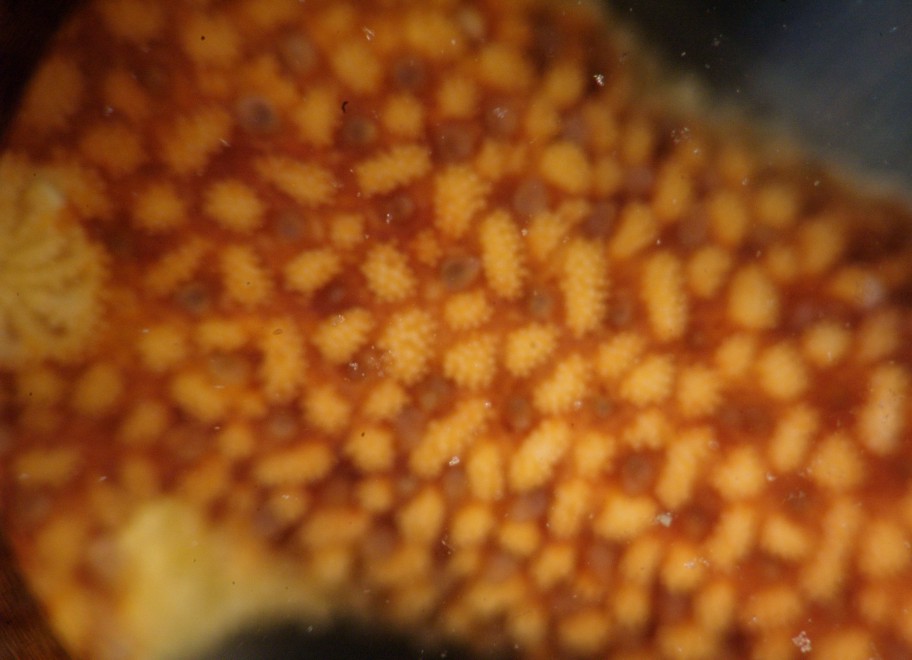
This closeup of the aboral
surface of a ray
shows the
pattern of pseudopaxillae.
The madroporite
is to the left.
Compare the pattern of these ossicles
with that seen in Henricia
leviuscula.
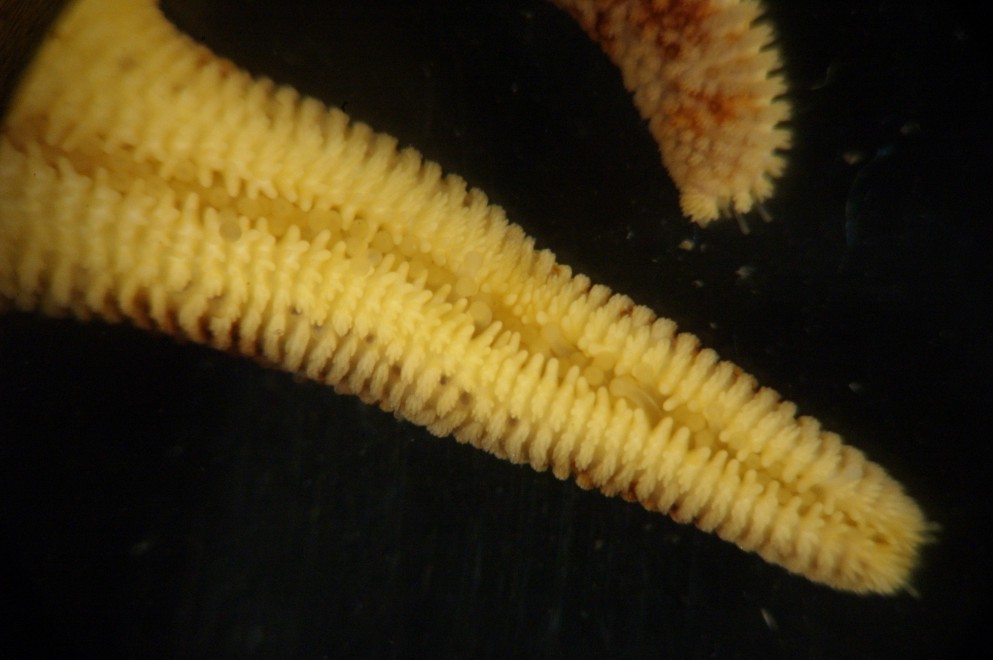
This oral view of the ray
shows the lighter color on the oral
side. Note that the marginal
plates are longer than other ossicles
but still not markedly enlarged.
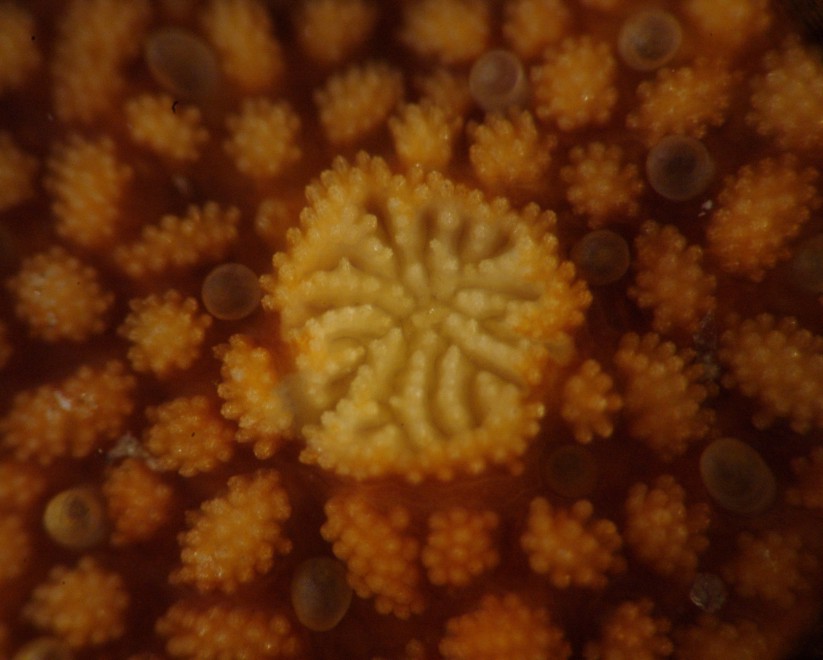
The madreporite
is creamy colored as in the type specimen. Notice the papulae
extended among the pseudopaxillae.
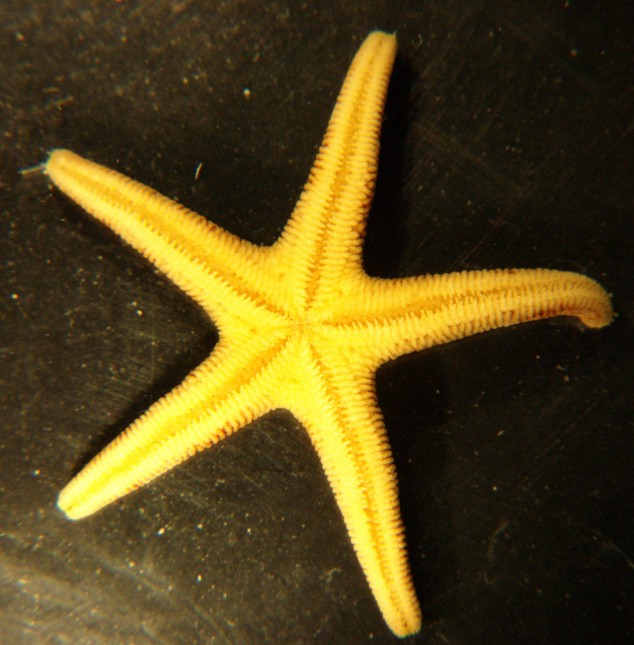
Oral view
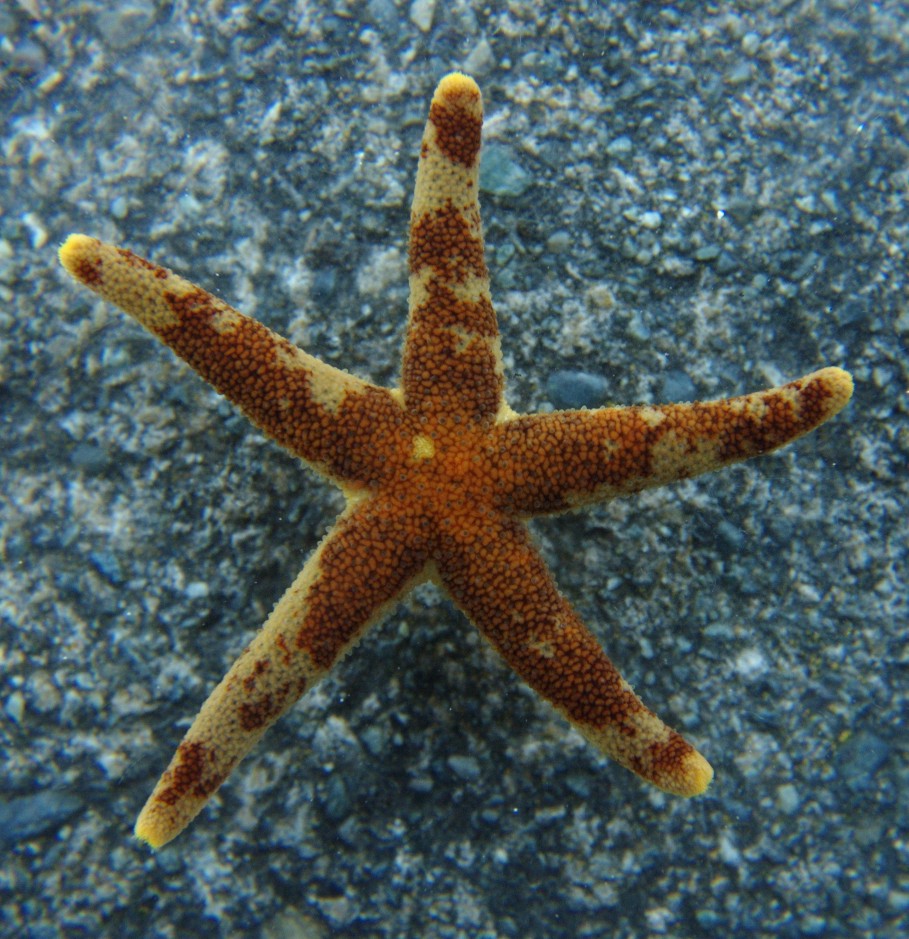
This individual with a 5.5 cm total arm spread, was photographed in 2011. Found intertidally on Sares Head.
Another mottled color pattern. Diameter is 4.5
cm. Photo by Dave
Cowles, August 2020
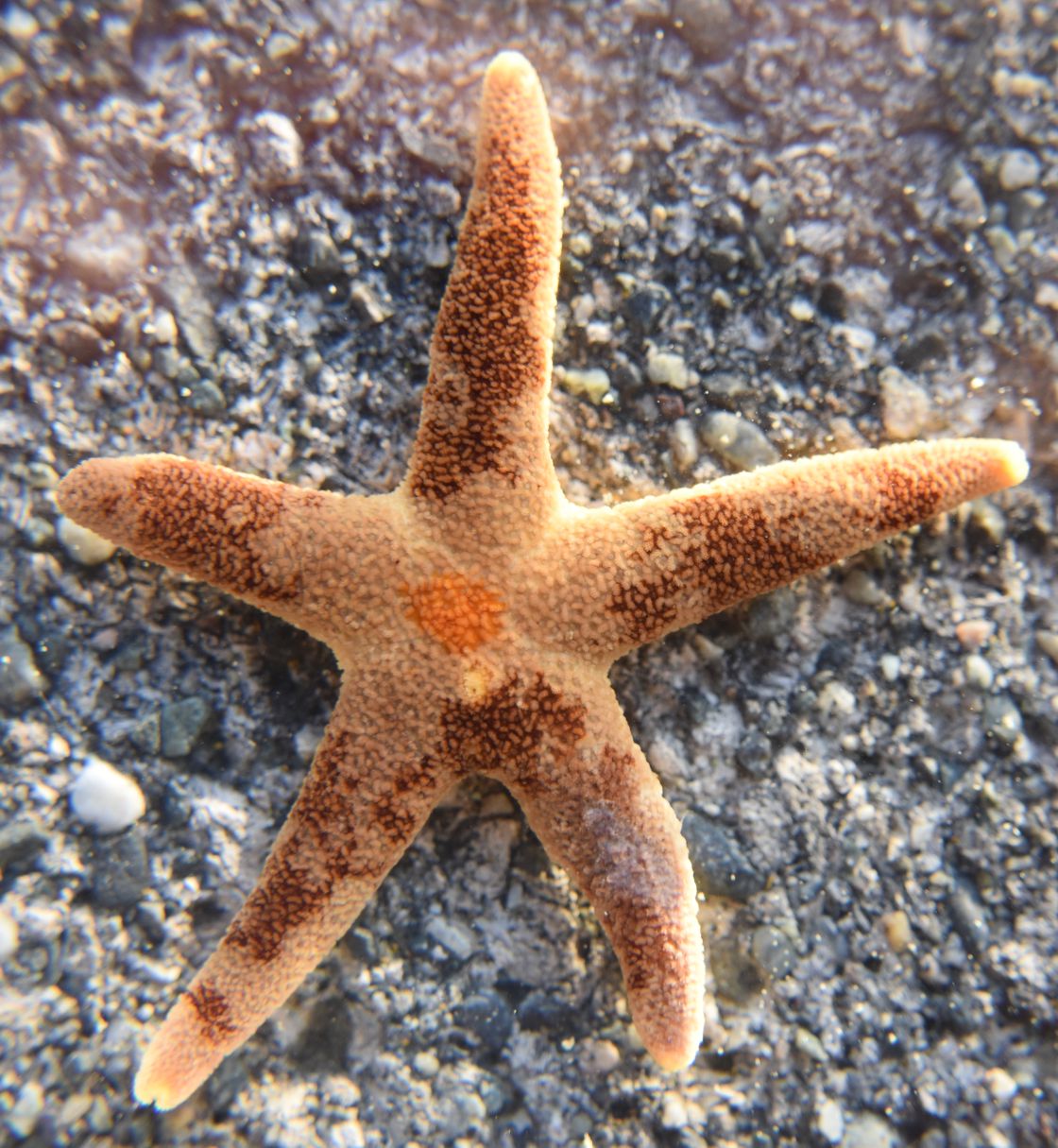
Authors and Editors of Page:
Dave Cowles (2010): Created original page
CSS coding for page developed by Jonathan Cowles (2007)
Rosario Invertebrates web site provided courtesy of Walla Walla University
